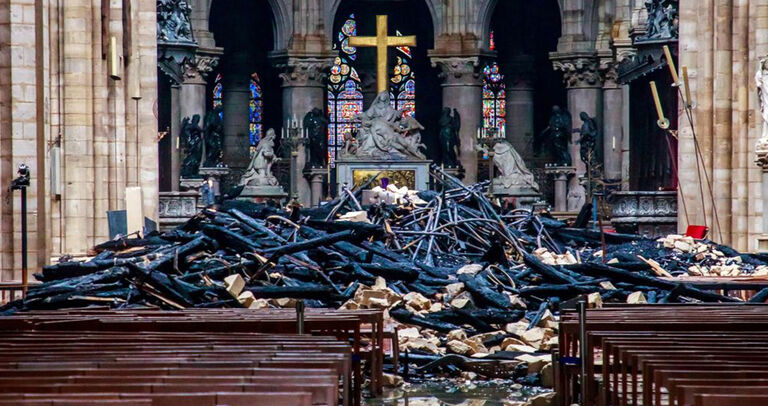Scientist Uncovers Disturbing Secret While Investigating Notre-Dame’s Remains
In April 2019 the world watched in horror as flames engulfed Notre-Dame de Paris — one of Europe’s most iconic buildings. In the end, little more than a charred and broken ruin was left. But experts are hard at work renovating the gothic beams and arches of the medieval Catholic cathedral. And after sorting through the building's ash and debris, one scientist made a somewhat disturbing discovery.
The Fire
This hair-raising find was made shortly after the devastating events of April 15, 2019. In the early evening of that fateful day, an alarm notified staff of a fire somewhere in the famous cathedral. Notre-Dame was then evacuated — but it took half an hour for the workers to locate the fire and summon the firefighters. At that point, the flames had already taken hold.
Worst Fears Realized
For those in charge of looking after the cathedral, it was a disaster that they’d long feared. Parts of this vast structure date back to the 12th century, after all, and the precarious state of its stonework was extremely vulnerable. In the attic and spire, oak beams from the 1200s had dried out, posing a worrisome fire risk. But few had realized how worrying it was until after the experts started the clean-up operation.
A Known Risk
Yet Notre-Dame was being monitored by fire wardens each and every day before the fire. Sadly, however, that didn’t stop this blaze — later determined to be the result of an electrical issue — from breaking out. On that day, Parisians looked on in shock for more than three hours as flames tore through the roof of the historic cathedral.
A Shadow Of Itself
During the blaze, hundreds of firefighters worked tirelessly to extinguish the flames. And in the meantime, the emergency services formed a human chain to remove priceless artifacts from the terrifying inferno. By the time the fire was put out, however, the iconic building was a mere shadow of its former self. But that was only part of the problem.

